Around the world, dozens of foods exist that start with the letter ‘Q.’ From delicious dishes like quiche from France to a pear-like fruit called quince, many foods begin with Q. If you want more details about fruits, including the quince and quenepa, you can learn about the fruits around the world that start with Q. Discover some foods that start with Q that you did not know existed below.
1. Queijadinha

Enslaved people in Brazil may have been the first ones to alter the recipe of Portuguese custard tarts to include coconut, creating the first queijadinhas.
©RHJ/iStock via Getty Images
Queijadinhas are tasty custard tarts made in Brazil. The two main ingredients include grated coconut and cheese but also sweetened condensed milk, sugar, butter, and egg yolks. A similar treat in Portugal is called the queijada, although queijadas do not contain coconut.
2. Queso
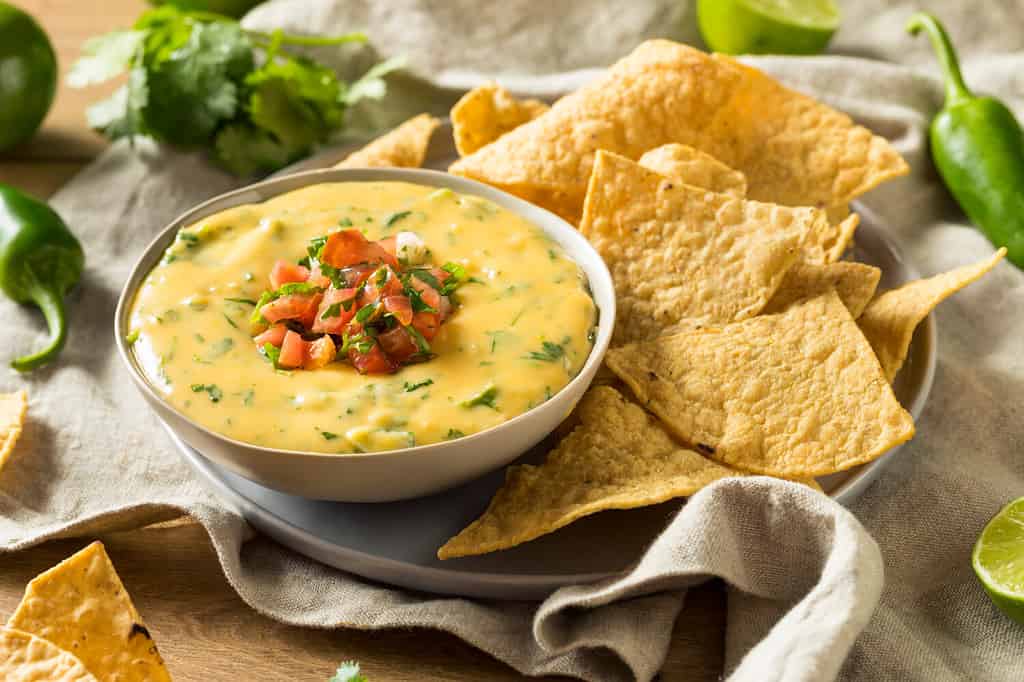
Queso, the Spanish word for cheese, encompasses a variety of dishes, including chile con queso and queso relleno.
©Brent Hofacker/Shutterstock.com
There are a wide variety of quesos when it comes to Mexican cuisine, including queso fresco, queso añejo, queso panela, queso manchego, queso Oaxaca, Queso cotija, and questo chihuahua. This food encompasses a wide variety of cheeses produced in Mexico and other Spanish-speaking countries and numerous dishes using queso.
3. Quenepa
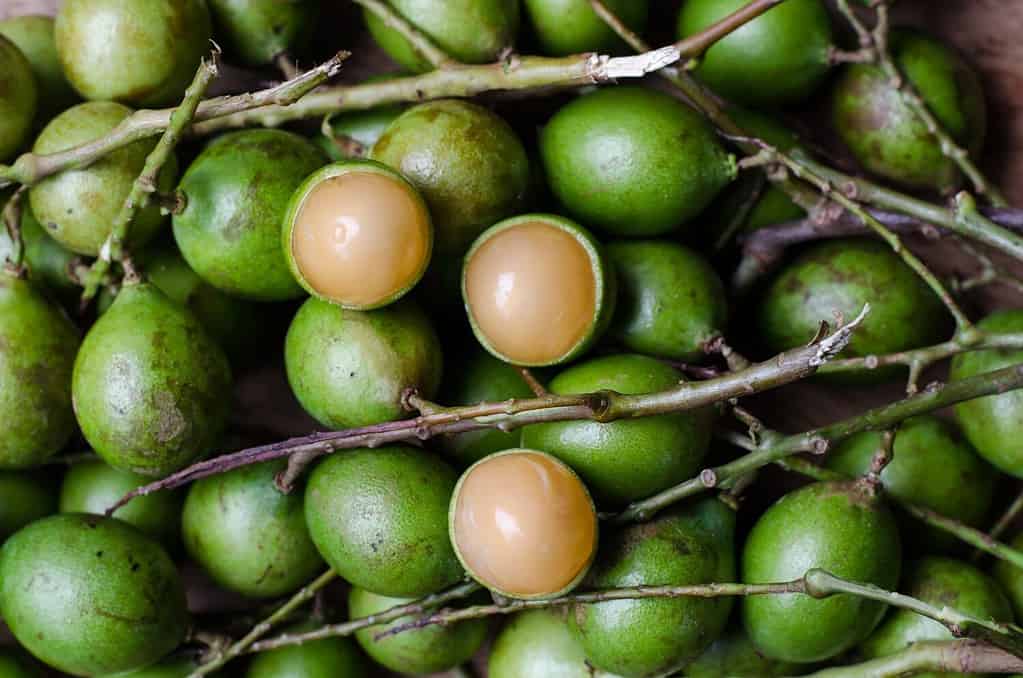
Another name for the fruit of this tree is Spanish lime or mamoncillo.
©Mabelin Santos/Shutterstock.com
Melicoccus bijugatus, a tree in the soapberry family, has a variety of uses. The small fruit, which is typically less than one inch in diameter, has a brittle green peel. People describe its taste as wine-like. Both the fruit and pit are edible. The roasted pit of a quenepa resembles a cashew.
4. Quince

For the best quality, you should only eat the quince fruit after it fully ripens or you cook it properly.
©darksoul72/Shutterstock.com
A relative of apples and pears, the quince is a fruit mostly unknown in the United States. The fruit is high in pectin, meaning people primarily eat quince in jellies and marmalades. Thanks to its adaptability, people cultivate this golden fruit mainly in Asia, South America, and Europe.
5. Quark
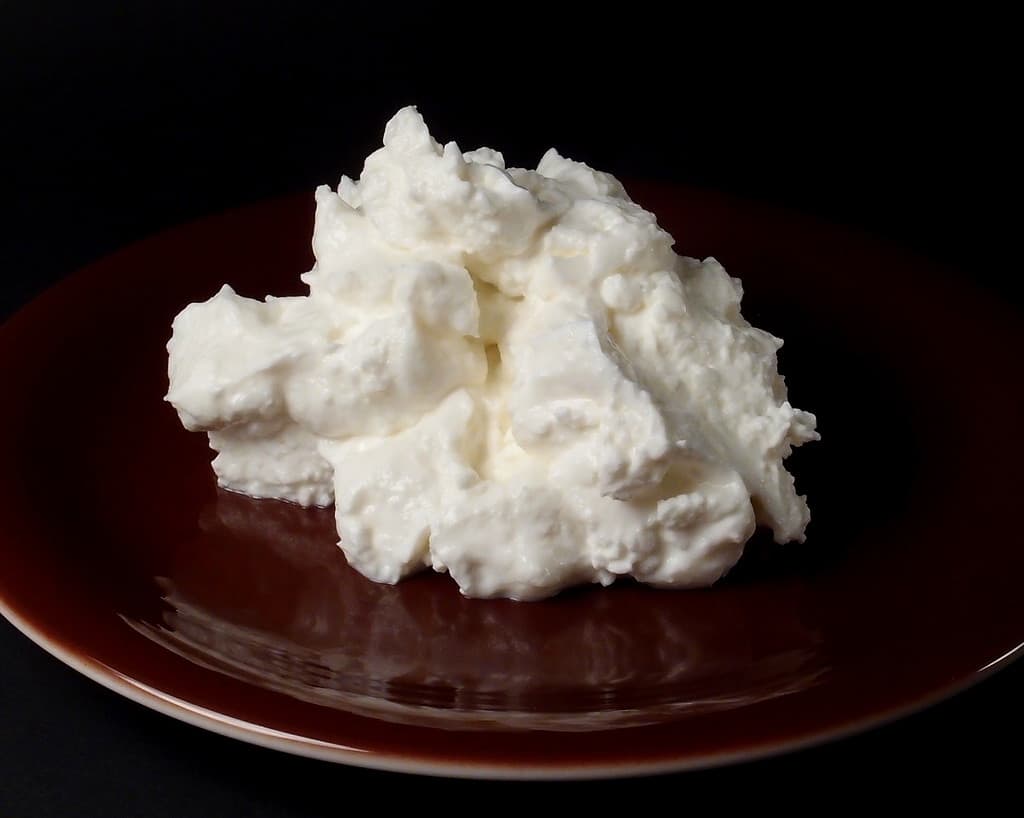
Similar to cottage cheese, quark has been a part of traditional Baltic, Germanic, and Slavic cuisine for a long time.
©SKopp / CC BY-SA 4.0 – License
Sometimes written as quarg, quark is a type of fresh cheese created by souring milk with lactic acid. Although translated as cottage cheese or farmer cheese in some dictionaries, quark is a distinct dairy product in Germany and elsewhere in Europe. People use quark in many aspects of cooking, including appetizers, main dishes, and desserts.
6. Quandong

Cultivating the quandong tree is difficult due to it being a partial root parasite.
©mastersky/iStock via Getty Images
A native plant to Australia, the quandong has been used by Aboriginal peoples for centuries. The red fruit of this tree is used for jams, pies, and chutneys. However, people eat the hard seed, or quandong nut, roasted or raw. Aboriginal peoples made necklaces and buttons by drying the quandong tree’s fruit. Other names for the quandong include native peace, wild pace, and desert peach.
7. Quinoa
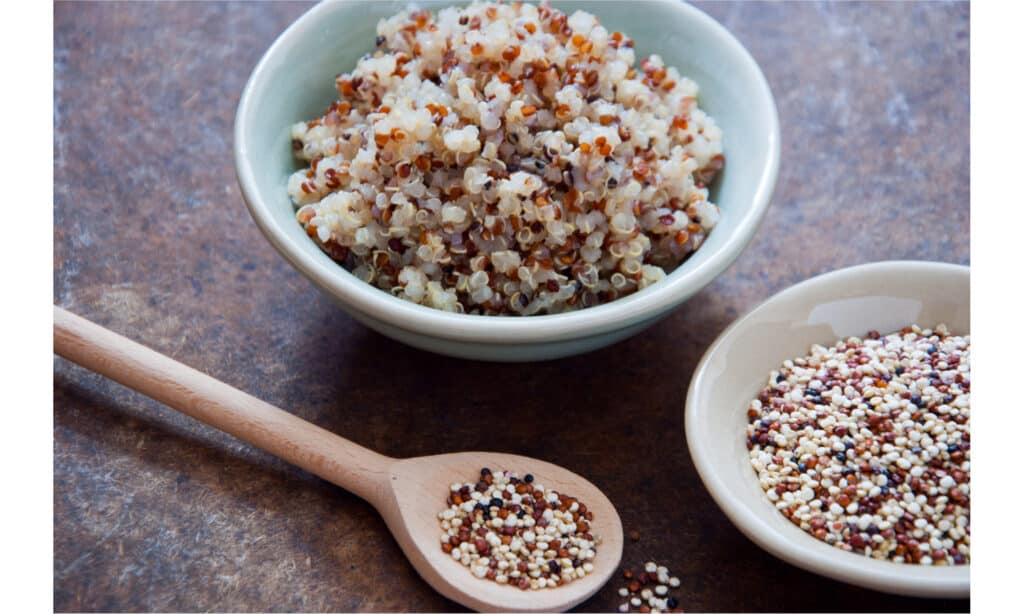
Indigenous peoples in Bolivia, Chile, Ecuador, and Peru have been growing and harvesting quinoa for at least 5000 years.
©iStock.com/letterberry
Considered a healthier option thanks to its high-protein, gluten-free composition, quinoa is a type of edible seed. It comes in different colors, including white, red, yellow, and black, and more than 120 varieties. People serve quinoa as a breakfast cereal with milk, as an alternative to pasta in pasta salad, or even as popcorn.
8. Quail
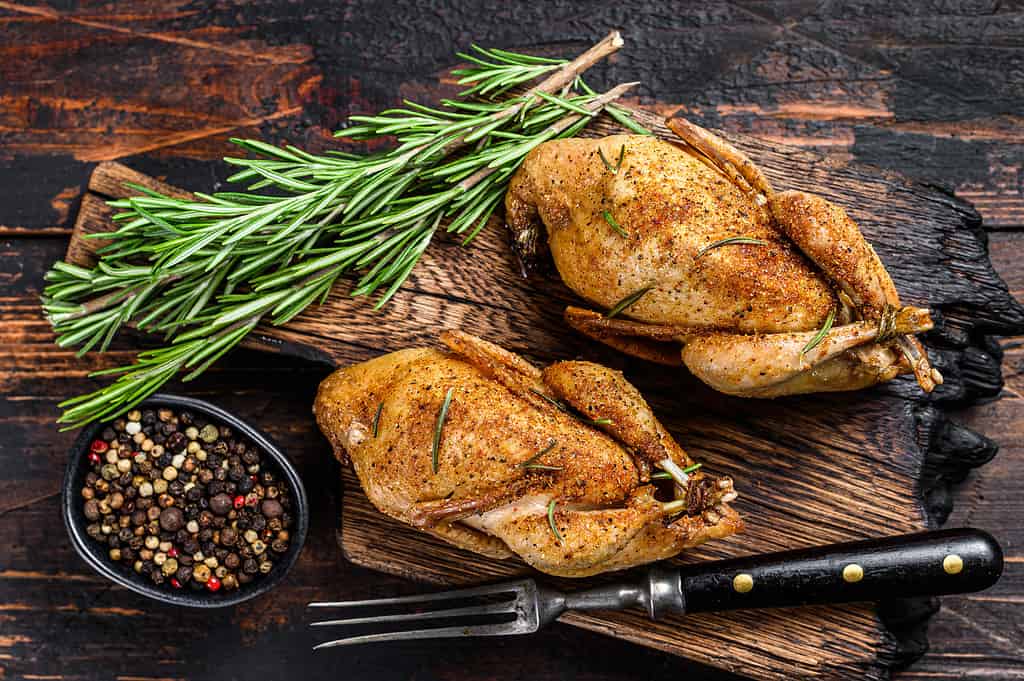
Quail are members of the
pheasant
family with a gamey-tasting meat.
©Vladimir Mironov/iStock via Getty Images
Larger species of quail are popular options for people to either raise on farms or hunt in the wild. People eat both Old World and New World quail species, and some have become more popular for consumption. Due to their distinctive call and color, bobwhite quail, indigenous to North America, remains a popular choice for consumption in the United States.
9. Quail Eggs
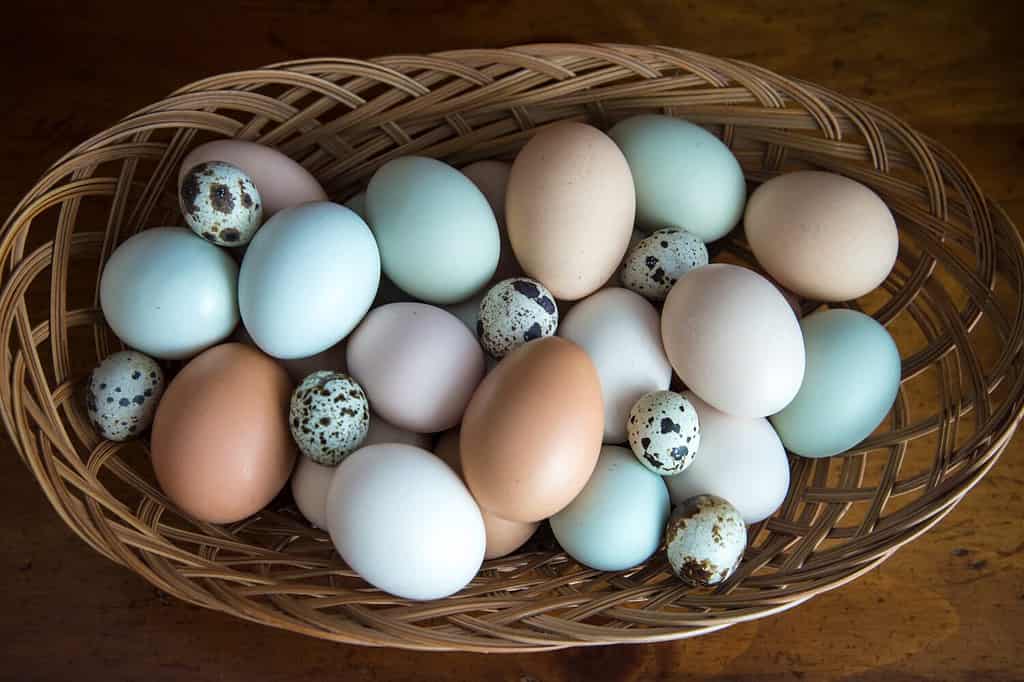
Quail eggs might be smaller than chicken eggs, but they contain more fat and protein, plus double the iron content.
©Rachelle Rae Denee/Shutterstock.com
People eat quail eggs all over the world, including as street food in Vietnam, as a delicacy in Japanese bento boxes, and on top of hot dogs in South America. They are described as richer and creamier than chicken eggs, which makes sense because of the very large yoke in each tiny egg. Quail eggs are more of a delicacy in Europe and North America, where chefs use them to create fancy, intricate dishes.
10. Quahog

Other names for quahog include hard-shell clam, round clam, chowder clam, and Northern quahog.
©eastriverstudio/iStock via Getty Images
People harvest this edible marine mollusk throughout New England and into Canada. They are most abundant in Rhode Island, where they are the state’s official shellfish. Fish markets sell different-sized clams under different names. The smallest clams are peanuts; the largest are cherrystones and chowder clams.
11. Quillquiña or Quirquiña
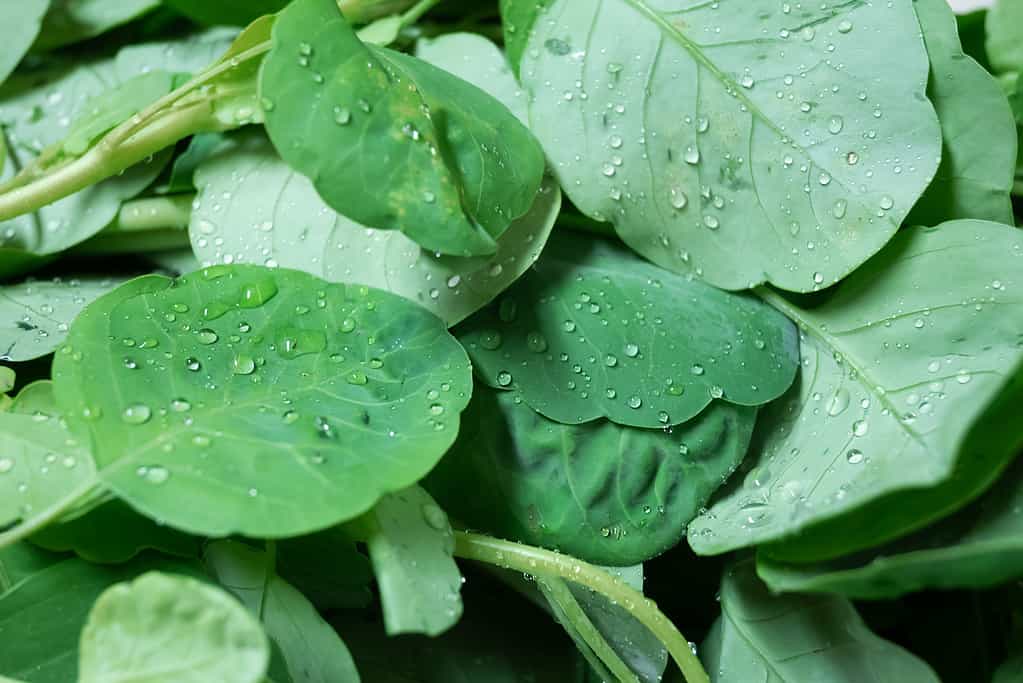
This fresh green herb is semi-wild and grows throughout South and Central America.
©f2-8-Studio/iStock via Getty Images
Another food that starts with Q has its origins in South American cuisine, including indigenous cooking. Quillquiña sometimes goes by the name quelite, although this term encompasses an entire group of edible wild plants that commonly grow in Mexico. The taste of quillquiña is similar to cilantro and can be added to salads, tacos, salsas, soups, and more.
12. Qishr

Because of its low caffeine content, qishr makes an ideal drink for any time of day.
©popovaphoto/iStock via Getty Images
A traditional drink in Yemen, qishr is made by combining spiced coffee husks, ginger, and cinnamon together. The resulting hot beverage is something resembling more of a tea than a coffee and is a popular option. When welcoming a guest into their home, Yemeni people offer qishr as a sign of hospitality.
13. Quiche
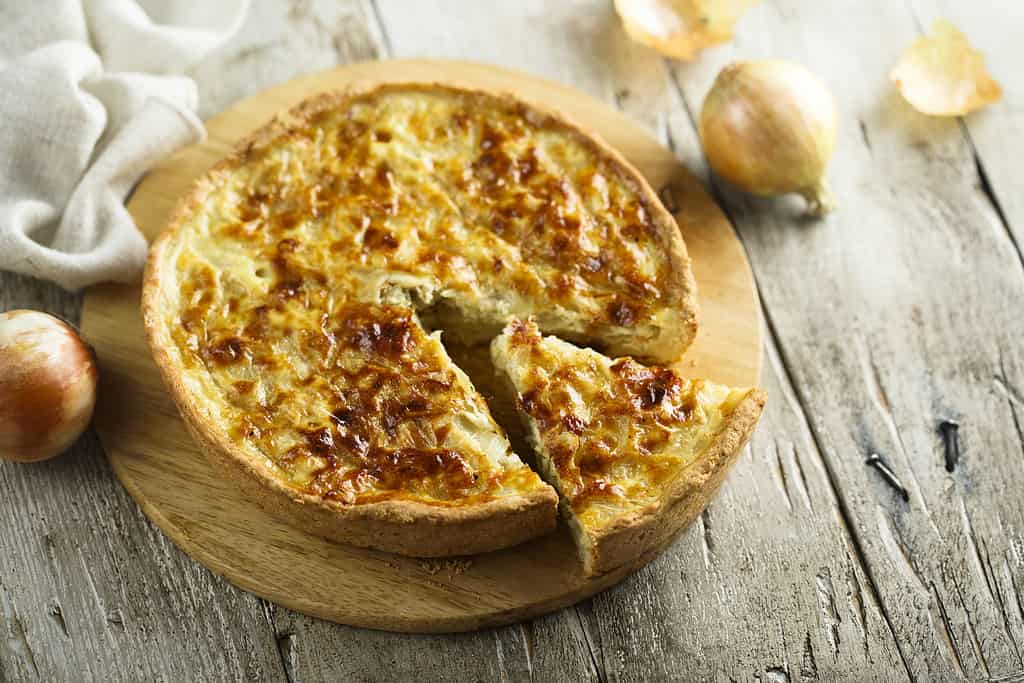
Variations on the basic quiche include quiche Lorraine, made with bacon, but everything from mushrooms to shrimp may be added.
©Mariha-kitchen/iStock via Getty Images
A French tart filled with a savory custard, the quiche originates in eastern France, specifically in Lorraine. Its name appears in French texts as early as 1803 but more recently in the regional language spoken in Lorraine. Due to cultural overlap in the region of Alsace-Lorraine, quiche might have some Germanic origin.
14. Qamar al-Din

The literal translation of qamar al-din from Arabic is ‘Moon of the Religion.’
©Dina-Saeed/iStock via Getty Images
Originally made in a region called Ghouta in modern-day Syria, qamar al-din is an apricot fruit leather used to make apricot juice during the Muslim holy month of Ramadan. The creation of qamar al-din has spread, but many people maintain that the best qamar al-din is produced in Syria and southwestern Turkey using specific apricots.
15. Quroot
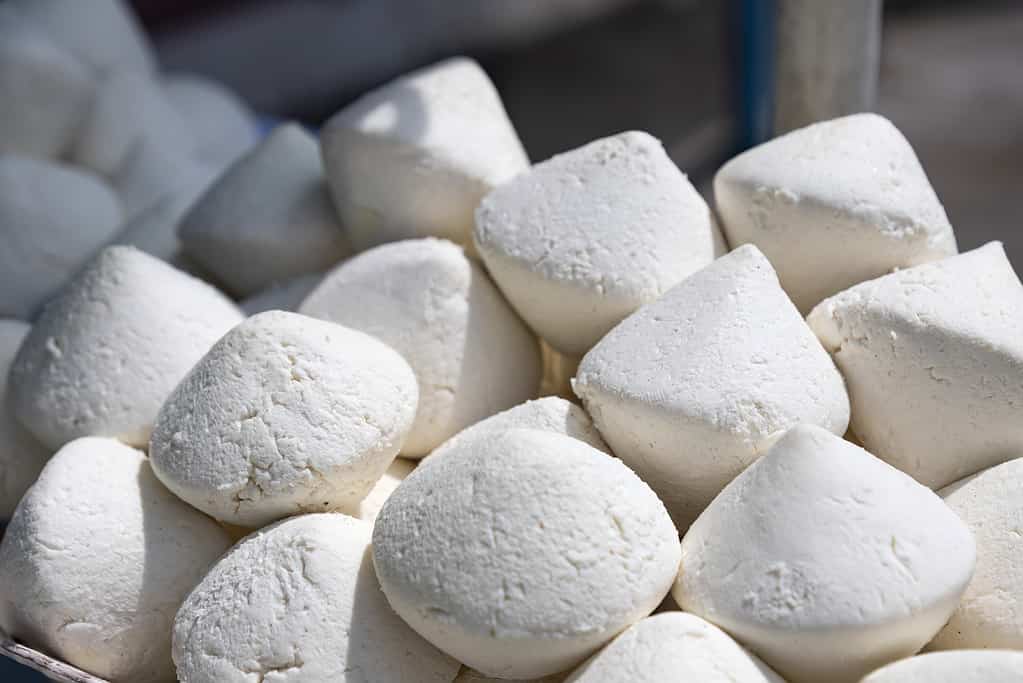
These dehydrated balls of yogurt have a tangy taste and can be used for sauces, dips, and soups.
©Emma Grimberg/iStock via Getty Images
A popular dairy product made in Afghanistan, quroot is created out of dehydrated plain yogurt. People form the dehydrated yogurt into balls, which street vendors sell at food stalls around Afghanistan as a snack. Traditionally, people make quroot using leftover buttermilk from producing butter out of goat’s or sheep’s milk.
16. Quetsch
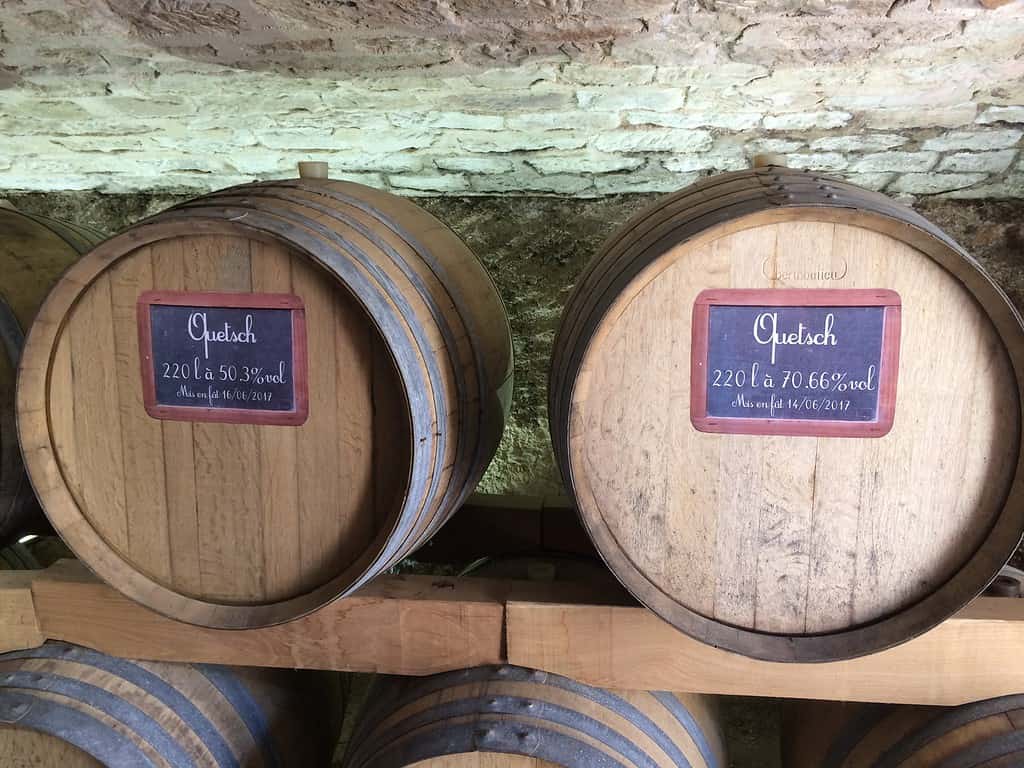
In Alsace, distilleries ferment questch plums to make a dry, white, and unaged brandy.
©Chris93 / CC BY-SA 4.0 – License
A variety of plums grown in Central Europe and France, quetsch plums are small with a purplish-black skin. The inside of this type of plum is yellow and sweet in taste. Distilleries make these plums into a popular type of brandy liqueur. Other names for quetsch plums include French sugar plum and Italian prune plum.
17. Queen of Puddings
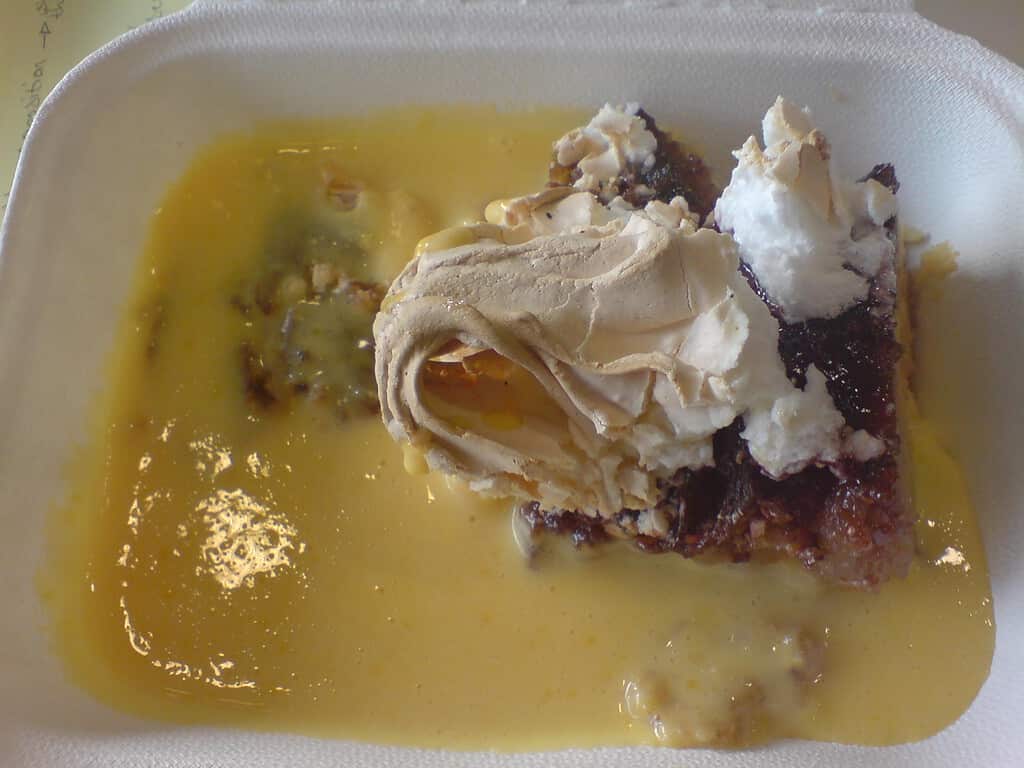
The name ‘Queen of Puddings’ might be a newer addition to this dessert, with the oldest reference to it by that name in 1884.
©Hilary Perkins / CC BY-SA 2.0 – License
Another of the foods that start with Q has a regal name. A layered British dessert, the Queen of Puddings features a breadcrumb egg mixture boiled in milk as its base, with jam and meringue spread on top. The earliest example of a pudding made in this way dates back to 1699, with the book The Closet Opened. Common modern variations of this British dessert use blackcurrant or raspberry jam. Some people make it with a vanilla custard or a crème anglaise, a type of custard sauce.
18. Quarabiya

In some regional variations, bakers form qurabiyas into different shapes or top them with peanuts, pistachios, walnuts, or almonds.
©E4024 / CC BY-SA 4.0 – License
A shortbread-like biscuit, qurabiyas have different regional variations but mainly consist of almond flour, sugar, egg whites, and vanilla. In other parts of the world, the name of this treat is different, such as kourabiedes in Greece and Cyprus. People in countries like Egypt and Morocco serve these biscuits with Arabic coffee or mint tea.
Some Other Foods That Start With Q:
- Querina Apple
- Queen Forelle Pear
- Quinault Strawberry
- Quararibea Cordata
- Quindim
- Quesadilla
- Queenfish
- Quzi
- Quenelle
- Quesito
- Qottab
- Quick Bread
- Quassia
- Qatayef
- Qapchi
- Quatre-Quarts
- Queen Tahiti Pineapple
The photo featured at the top of this post is © iStock.com/letterberry
Thank you for reading! Have some feedback for us? Contact the AZ Animals editorial team.






